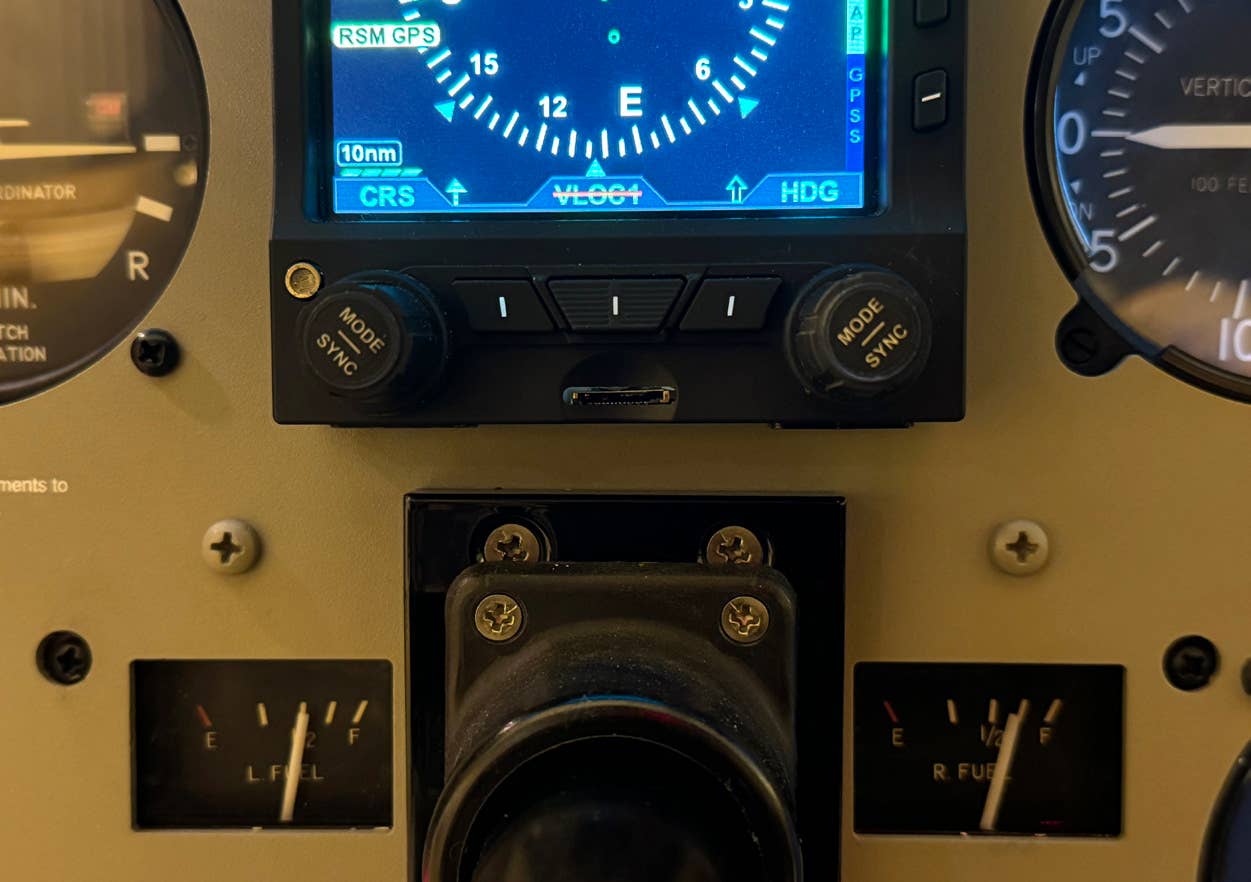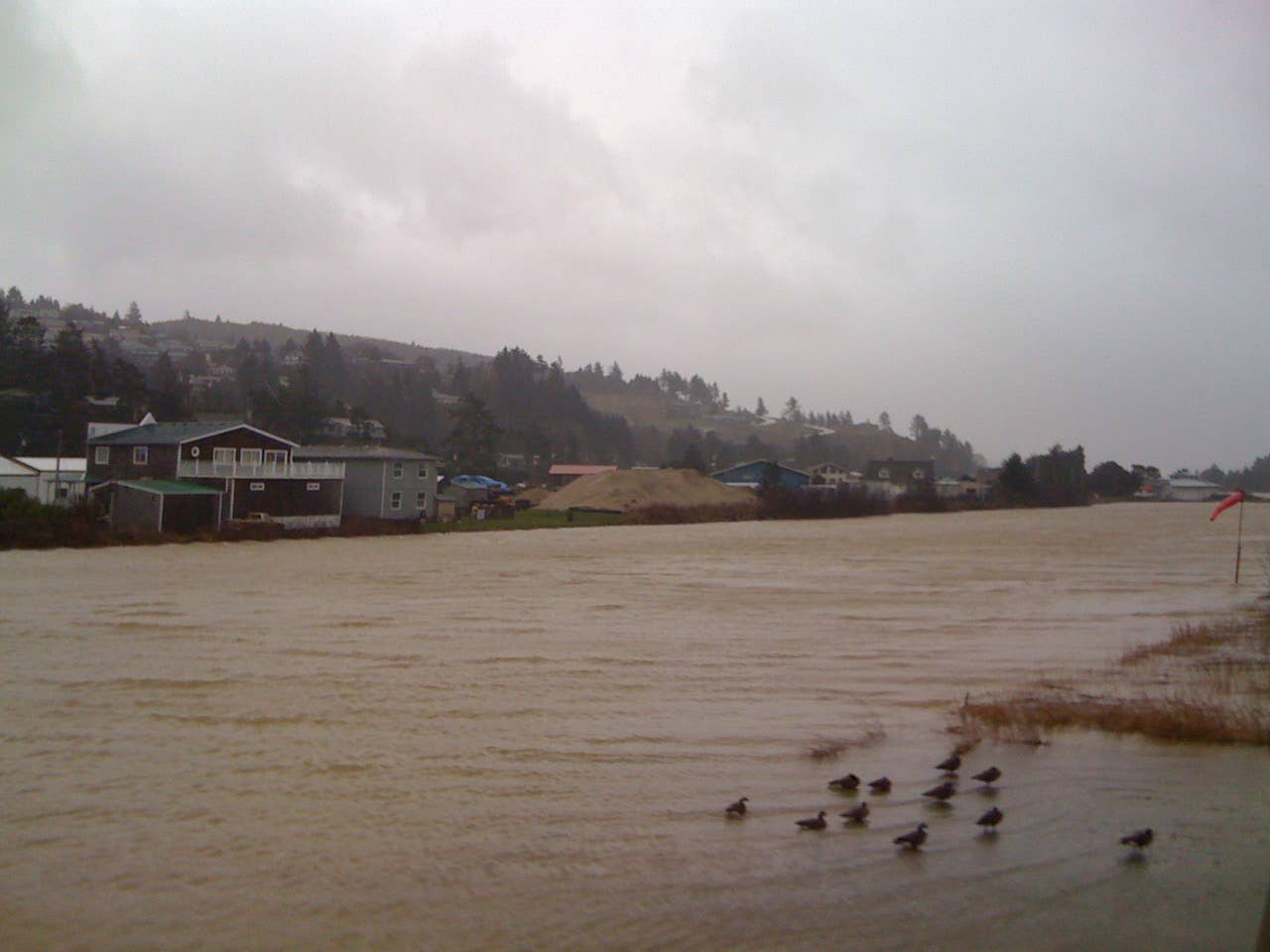
Thanks to the information revolution, new
computerized tools have changed the
flight-planning process. Oleg Shelomentsev
April 2010 LIKE A LOT OF PILOTS who learned instrument flying in the mid '90s, I got my ticket as new technology was just beginning to show up in the cockpits of small airplanes. Not that it did me much good at the time. My instrument training at FlightSafety Academy, then in Lakeland, Florida, was old-fashioned in every respect, including the way instructors taught us how to plan our flights, which was strictly an analog affair, done using paper charts, a pencil, a plotter and an E6B. For weather and notams, we'd dial up Flight Service and get a lengthy briefing from a specialist about the proposed flight.
The briefings were pretty grueling, and most of it was hard for me to make sense of. So I’d prepare. Before the call, I’d lay out the appropriate low-en-route chart and a big planning chart just so I might be able to find the mysterious VORs the briefer invariably mentioned in his descriptions of the weather systems that might come into play. The information was hard to understand and put into context. Much of it didn’t seem to pertain to me. For instance, when I got a briefing for a dual cross-country from Lakeland to West Palm Beach to Vero Beach and back to Lakeland, I heard all about a cold front up in Mississippi.
Despite that cold front hundreds of miles away and heading away from us, I managed to finish that cross-country and get my ticket. But along the way nobody, not my instructor, not my examiner, talked much about all the things that a new IFR pilot like me was going to have to consider before launching on that IFR flight. What were the real weather hazards? What should I do about planning my instrument flight when there's high terrain? And how could I get to the point where my real flights weren't taking three hours to plan?
**
Real Life**
The people who really taught me to think as an instrument pilot were my colleagues Tom Benenson and Richard Collins and my boss, Mac McClellan. Tom's knowledge and experience with real IFR was a godsend. Always a realist, Mac demystified IFR for me, and much of that was through his straight talk about flight planning, a process that, even after I'd been IFR-rated for a while, was at times overwhelming for me. Likewise, Richard Collins was a great resource. Once, a few months after I'd gotten my ticket, he asked me how my instrument flying was going. I confessed that I was worried about being able to know precisely where the ice and thunderstorms were. He calmly told me that that was a good thing to be worried about.
Like a lot of new instrument pilots, I was in awe of the complexity of the process, and every flight early on was an ordeal. Invariably, I’d do a very thorough job of planning the flight out and a very hurried job for the return trip. Among other things that perplexed me were the nuts and bolts of routing, especially standard instrument departures and arrivals, on which I’d spent all of 10 minutes during my training, decoding weather data and, perhaps most importantly, as I mentioned to Richard, knowing what to do about the weather.
For a while I continued doing things the way I’d been taught. I would do an elaborate flight plan with a navigation log, and I’d draw my lines on the en route charts, linking airways and their turns, dutifully adding up the number of miles along the way and factoring in the wind on my E6B to come up with leg lengths and estimated times en route. It was a lot of work, even though I’d seldom get that clearance from the controller.
Salvation
Early on, Mac showed me how to use CSC DUATS to plan a flight. It was a revelation. Even though its weather graphics were primitive compared with what it and other providers have today, it gave me a clear picture of where and when to expect adverse weather. Moreover, the flight planner on DUATS gave me an easy auto-routing capability that I could use to plan my flight in seconds. No longer would a briefer tell me that "the computer wouldn't take" my routing. If DUATS generated it, the computer would take it.
By using the computer, something I was forbidden to do during my instrument training, I was able to cut an hours-long job into 20 minutes of prep and get more and better information in the process.
Modern Tools
A number of incredibly powerful and ingenious tools exist to make the pilot's job of planning the flight easier than ever. Our personal computers or, increasingly, handheld devices, iPhones and the like hold the key to easy preflight information gathering and flight-plan filing.
As always, the goal behind planning a successful IFR flight is to minimize the risks while flying as efficient a routing as possible in terms of groundspeed and, in some cases, passenger comfort. Computerized flight-planning utilities make this job easier and faster, and they do it better in most cases than we can.
Electronic Preflight Planning
Just about every imaginable kind of
preflight-planning tool is available online or through a dedicated computer-based program that accesses the Internet. Some of these programs qualify as FAA-approved electronic flight bags (EFBs) so you can use them on the airplane.
Many of them allow you to file your flight plan with the FAA, usually through a link to your DUATS or DTC DUAT account. Many check RAIM availability for you, a new requirement; some help with weight and balance; and others assist you in filing your international flight plan through eAPIS.
The costs of these programs and online services range from free to hundreds of dollars a year, and some of the best free sites are very good. More and more, paid flight planning is becoming a tool for operators of business and corporate aircraft who need the international weather and flight-planning capability.
I’ll discuss some of the most popular flight-planning programs and Web applications, but this is not intended to be an exhaustive list. Furthermore, my not mentioning a feature doesn’t mean that particular product doesn’t have it. Likewise, my mentioning a feature on one program doesn’t mean that another program lacks it. These utilities are packed with features, and just about every provider listed here has multiple products at multiple price points. If anything here sounds interesting, please check it out in further detail.
Getting the Job Done
When it comes to getting the best graphical weather information, official FAA-approved briefing sites CSC DUATS (duats.com) and DTC DUAT (duat.com) provide relatively little advanced graphical weather data. CSC DUATS, in particular, is a stylistic throwback to the days of dial-up access and bulletin boards, but its functionality is solid and it works reliably and fast. I've used it for years and love it. DTC DUAT is slightly more sophisticated-looking, and it has some convenient features, such as a flight planner that compiles a printable set of documents, including text weather, selected weather graphics and a detailed nav log.
A lot of pilots use these services, in part because they’re so fast. When I’m planning a flight, I can get a quick look at the weather, including forecasts and current conditions; I can plan using my own route or by asking the computer to route it for me using my airplane’s profile; and I can file right there. For most of my IFR flights, I can do it all, including planning my return flight, in about 20 minutes’ time.
That said, there are times when I want to use more full-featured planning sites, and there are several free and pay sites and programs available.
**
Some Online Resources**
One great site is NOAA's National Weather Service Aviation Weather Center Aviation Digital Data Service (aviationweather.gov), which has a wide variety of cool weather tools, including current icing advisories, pilot reports of icing, minimum freezing levels and even supercooled large droplet (SLD) forecasts, graphical metars and TAFs, to name only a few.
I also regularly use fltplan.com, which allows you to plan and file flight plans using your FAA-registered information. You can see your flight plan’s route on a background of a computerized chart, satellite photo imagery or a sectional chart. There are multiple flight-planning options, a number of great weather tools and the ability to file flight plans more than 24 hours in advance, something DUATS won’t let you do. While the setup and busy look of fltplan.com might be a bit intimidating at first, it’s worth the time to get familiar with it. Moreover, the site uses historic winds to help you plan flights that are farther out than the winds aloft forecast. Many sites, including DUAT, just factor in calm winds for planned flights that go beyond the forecast’s horizon.
A new flight-planning website I love is flightaware.com, a site that you might already know for its easy-to-use flight-tracking features. Its new flight-planning utilities are even better, giving pilots a wealth of tools, including RAIM predictions, charting and a nav log that automatically figures in holds and the trip to your alternate when determining your flight time. It even includes a bunch of detailed, premade airplane profiles (including one for my PlaneSmart SR22 Turbo). You can file FAA flight plans through flightaware .com but not yet for flights more than 24 hours in advance, though that’s a planned capability.
We’re all familiar with weather provider WSI through its flight-planning kiosks at FBOs around the country, but WSI also has a paid Web service called PilotBrief Online (to go along with its other computer-based products). PilotBrief Online gives pilots a plethora of flight-planning tools and its patented NowRad radar. You can select your routing based on clearances that controllers have already given to pilots flying the same route. The service is popular with international flyers, because WSI not only offers international filing and briefings but also creates weather products, like virtual radar in remote parts of the world where there are no dishes, based on data it does have. With WSI, when you file your flight plan, it goes directly to the FAA instead of through a third party, because WSI is an official FAA filing provider. Your plan will also show up at WSI kiosks at the airport, a handy feature. Check it out at wsi.com/aviation/solutions.
FlightPrep Online Flight Planner (flightprep.com) is a Web application that lets you access your information and get weather and file flight plans wherever you are. When you plan your trip, you can do it using FlightPrep’s electronic charts, scanned sectionals or WACs or scanned en route charts. The Online Flight Planner lays out your flight for you, generating a flight log and showing you all the pertinent TFRs and special-use airspace, and it shows significant weather along your route as well. One feature I like is the profile view, which shows your planned route of flight relative to terrain. While FlightPrep isn’t the only company with profile view, it’s an especially handy tool for when your trip takes you off the airways.
Computer-Based Flight Planning
If you want to use a computer-based program, one that resides on your hard drive instead of on the Web, there are a number of really good ones available from companies like Jeppesen and WSI. Some are geared more toward corporate/commercial users and others more toward private flyers, and some of the programs are fairly expensive while others require regular data updates at additional cost. Still, they're popular because they offer features not available on most free online services, such as international weather and routing and available dispatch services.
One of the best-known PC-based flight planners is Jeppesen’s FliteStar (jeppesen.com/flitestar), a program that resides on your computer and uses an Internet connection to download the latest weather from Jeppesen’s weather center and to file flight plans. As Jeppesen does with its charts, the company sells FliteStar by global geographic region. There are also different levels of features optimized for different kinds of users, and the Jeppesen data that underlie FliteStar’s capabilities can be updated regularly too, though you can choose to do that as infrequently as once a year. Depending on the version, you’ll see depicted a variety of nav data, including airports and navaids, airways, restricted airspace, numerous map features and more. The interface is slick, and the weather and flight-planning utilities are sophisticated and powerful, which is why it has become popular with corporate flight departments around the world.
Seattle Avionics’ Voyager flight-preparation program (seattleavionics .com) is another popular computer-based product with a loyal following. The software not only lets pilots check the weather before they go but also works forecast winds into the flight-plan profile, calculating the best altitudes for the conditions based on the chosen airplane’s profile, factoring in winds and fuel costs. It will then file your flight-plan print approach charts (a very desirable option in my book) and nav logs, if you so desire.
The Revolution Continues
Again, all of these computerized preflight-planning tools have made pilots' lives easier and flying safer. As I said, computerized flight planning has improved my flying experience by making the planning process better, easier and much, much faster. I'm a convert. I don't own a single paper chart, and I haven't called Flight Service for a briefing in ages. I've got better weather information available to me at home and in the airplane than the briefer has at his or her station.
For more information about the programs and Web applications I mentioned, visit the companies’ websites. There are more cool capabilities and useful options than I could hope to mention here, and based on my experiences talking with other pilots about the planning process, I know that personal preference plays a big role in determining which electronic flight-planning tool is best for you. You know the way you fly and the way you like to plan, and with all the options out there, it’s a good bet you’ll find a preflight-planning tool to fit your needs.

Sign-up for newsletters & special offers!
Get the latest FLYING stories & special offers delivered directly to your inbox






